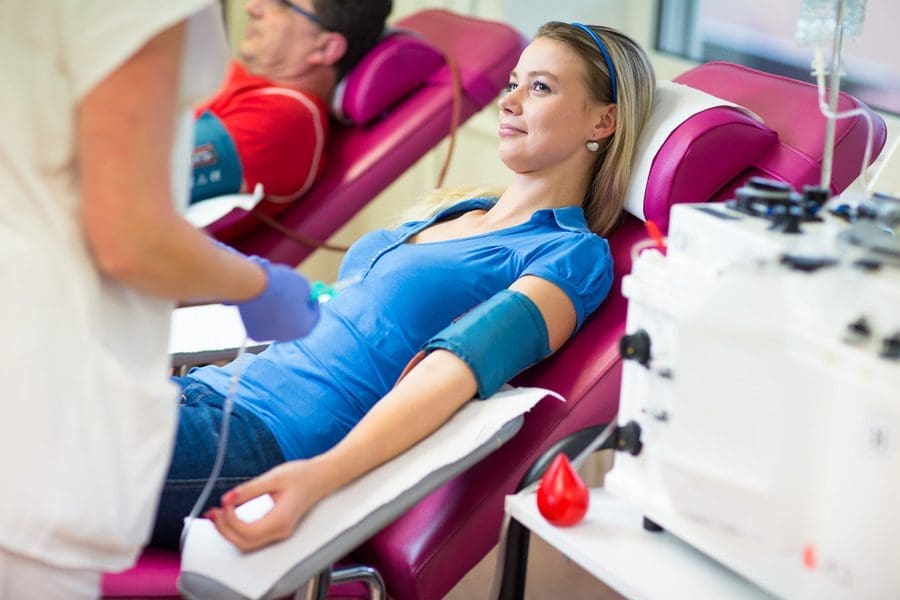People tend to think more about donating blood following a tragedy, but blood is actually needed every day of the year. If you’ve never donated before, here is a quick guide to how to donate and what the process looks like.
What Are the Qualifications to Donate Blood?
Per the Red Cross, donors can give blood every 56 days, roughly six times per year. Donors must be in good health, at least 16 years old, and weigh 110 pounds. The most common reasons people cannot donate include being sick, having certain illnesses, being on certain medications, having low iron, or having recently traveled outside the United States.
How to Sign Up to Donate
The easiest way to sign up for a blood drive near you is to download the free American Red Cross Blood Donor app, which notifies you of upcoming blood drives, allows you to schedule and manage your appointments, lets you view results from your physical, and informs you when your blood is on its way to a patient.
What Does the Process Look Like?
- Registration: During the simple registration process, you’ll go over eligibility, show your ID, read some information about donating blood, and provide your contact information. Pro tip: If you download the app, after your first visit, you can skip registration and use your RapidPass to check in.
- Health History: Next, you’ll have to answer a few questions about your health history, current medication, and places you’ve traveled. Lastly, your blood pressure, temperature, and hemoglobin will be checked before proceeding.
- Donation Time: You’ll start by having a small area of your arm cleaned before the syringe is inserted. For the duration of the donation, which is 8-10 minutes, you’ll be sitting or lying down. Once blood has been collected, a bandage will be placed on your arm.
- Recovery: You’ll sit for a snack and something to drink in the refreshment area, then about 10-15 minutes later, you’ll continue your day. And that’s it!
Before, During, and Day-of Pointers
- Before donating blood, read up on the best foods to eat (like iron-rich foods such as red meat, fish, poultry, beans, spinach, and raisins). Get a good night’s rest and drink a lot of healthy liquids.
- On the day of your donation, have your ID and a list of current medications ready to make the registration process quicker.
- Before donating, drink extra water and eat a healthy meal without fats.
- Wear a shirt with sleeves that you can roll above your elbow comfortably.
- Take a book or listen to music or a podcast while donating to make the time go faster.
- After your donation, drink a lot of liquids and avoid alcohol. Keep your bandage on for several hours and avoid heavy lifting.
- If you experience dizziness or lightheadedness, sit or lie down for a few minutes until the feeling subsides. Keep eating iron-rich foods as your body recovers.







